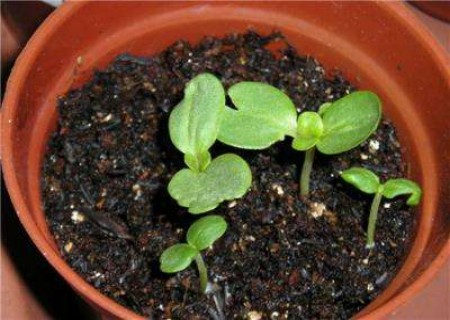Culture methods and matters needing attention of potted zinnia (zinnia)
Hundred-day chrysanthemum (zinnia) is a famous ornamental plant, which is sought after by the majority of potted friends because of its independent flowering and colorful flowers. Although it is beautiful as a potted flower, how about maintenance and management? How to manage in order to maintain it well? The following editor will explain the maintenance and management methods and matters needing attention of potted hundred-day chrysanthemum.

1. Soil
Hundred-day chrysanthemum likes good drainage, fertile and loose soil, and the configuration of culture soil can be mixed with rotten leaf soil, fine sand and garden soil, so as to meet the growth needs of soft, breathable, comfortable and fertile soil.
2. Lighting
For the daylighting requirements of potted hundred-day chrysanthemum, we can give it all-day sunshine. Because the hundred-day chrysanthemum is a light-loving plant, if the light is not enough, it is easy to cause the plant to grow too, and the resistance will be weakened, and the florescence will also be adversely affected, but the high temperature in summer requires shading and cooling measures to avoid exposure to the sun.
3. Temperature
Hundred-day chrysanthemum likes warm, sunny growth environment, and is not resistant to heat and high temperature. the suitable growth temperature is between 18-20 ℃ in daytime and 15-16 ℃ at night. If the living environment is good, summer will grow at an astonishing rate.
4. Watering
Because the hundred-day chrysanthemum has a high demand for optical fiber, which also aggravates the evaporation of water in the basin and the plant. In order to ensure the humidity of the basin soil to facilitate the supply of water to the plant, it is recommended to water the plant every day in summer, and the amount of water should be determined according to the situation in the basin. As long as there is not a lot of water in the basin.
5. Fertilization
Before planting the plant in the pot, it is necessary to apply a small amount of compound fertilizer as the base fertilizer at the bottom of the pot. after planting, the roots can be easily irrigated with dimethazone for disinfection. The soil moisture in the basin should be maintained within 7 days after planting in order to promote the normal growth of plant roots. When the root distribution of the plant is more, and even touch the bottom of the basin, it can be fertilized at the right time, about 2 or 3 fertilizers every 7 days. Spray wet thin water fertilizer on sunny days, apply granular fertilizer on rainy days, and add some calcium fertilizer.
6. Pick the heart
When the seedlings grow four leaves, in addition to planting in the pot, we should also pick the heart in time to promote the germination of more lateral branches, dwarf the plant and, more importantly, shape the plant shape for the potted plant. After the flower fades, it is necessary to cut off the dry flower head in time, which not only helps to reduce nutrient consumption, but also allows more flowers to bloom in the next round.
7. Disease
The common diseases of hundred-day chrysanthemum are white spot, black spot and mosaic. Therefore, we should often observe the growth of the plant in the process of conservation and management. once the plant is found to be sick, we should take corresponding measures to avoid affecting plant growth, flowering and even death.
Note:
The main results are as follows: 1. Because there are few lateral roots, it is slow to recover after transplanting, so we should transplant it in time and transplant it in the seedling as far as possible. If you wait for the plant to grow up and then transplant, it is easy to cause the branches and leaves of the lower part of the plant to dry up, affect the growth and development and then transplant growth.
2. Plants need to avoid strong direct sunlight at the initial stage of seedling growth, otherwise it is easy to burn out the seedlings.
Time: 2019-05-31 Click:
- Prev

How to deal with the rotten roots of bonsai
After the baptism of nature, the carving of years and the creativity of bonsai masters, potted plants can become a perfect bonsai masterpiece. Bonsai is often full of elegance and beauty in front of the world, and perfection is a kind of beauty, and defects are sometimes also a kind of beauty, but there is a defect that can not be called beauty.
- Next

How to raise Begonia Bamboo Flower
Bamboo begonia is a kind of beautiful thing which is very suitable for home cultivation, but recently, some potted people always find that their potted begonias are in the doldrums. What's going on? In fact, this is due to the fact that the basin friends have not mastered the correct maintenance and management methods in the daily maintenance process.
Related
- Fuxing push coffee new agricultural production and marketing class: lack of small-scale processing plants
- Jujube rice field leisure farm deep ploughing Yilan for five years to create a space for organic food and play
- Nongyu Farm-A trial of organic papaya for brave women with advanced technology
- Four points for attention in the prevention and control of diseases and insect pests of edible fungi
- How to add nutrient solution to Edible Fungi
- Is there any good way to control edible fungus mites?
- Open Inoculation Technology of Edible Fungi
- Is there any clever way to use fertilizer for edible fungus in winter?
- What agents are used to kill the pathogens of edible fungi in the mushroom shed?
- Rapid drying of Edible Fungi

